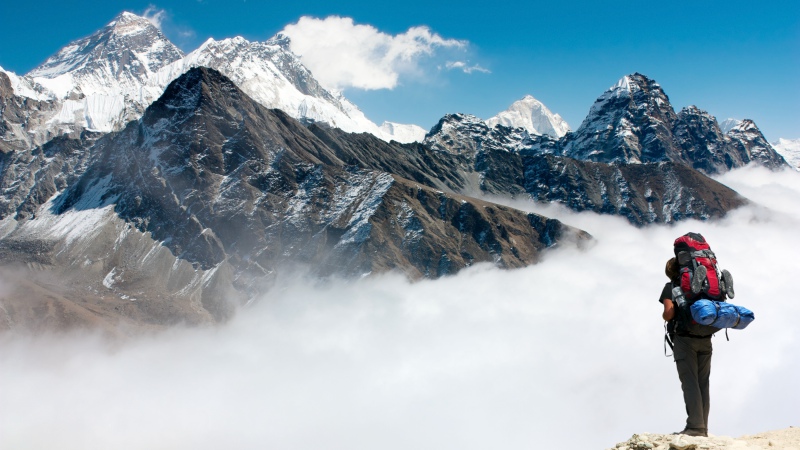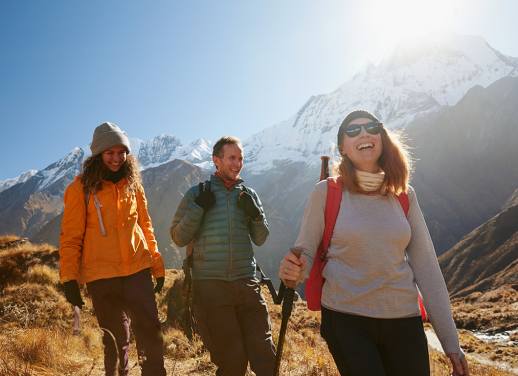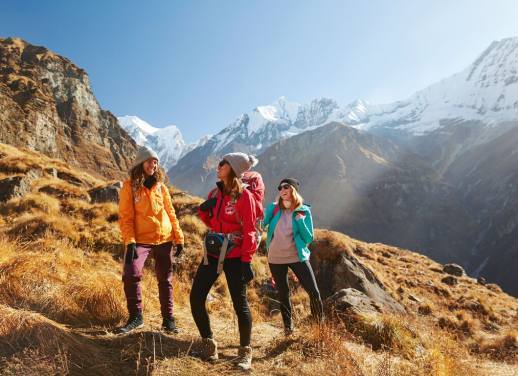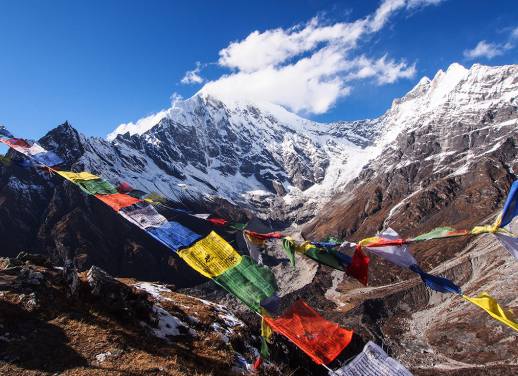The Himalayas – and their celebrity mountain, Everest – have long held a fascination to people the world over. While only a small percentage of the planet’s population will actually summit the highest point on Earth, you can still follow in the adventurous footsteps of Edmund Hillary and Tenzing Norgay by trekking to Everest Base Camp.
Stunning landscapes are a given on this journey. But what else can you expect – like, really expect?
It will be very physical
You will be doing A LOT of walking over the course of the trek. Expect anywhere from 4-9 hours on any given day over a variety of terrain, including steep hills, high suspension bridges and rocky paths. Don’t be fooled by the colloquial term ‘Nepali Flat’ – these stretches of the trail are less steep than others, sure, but are still undulating.
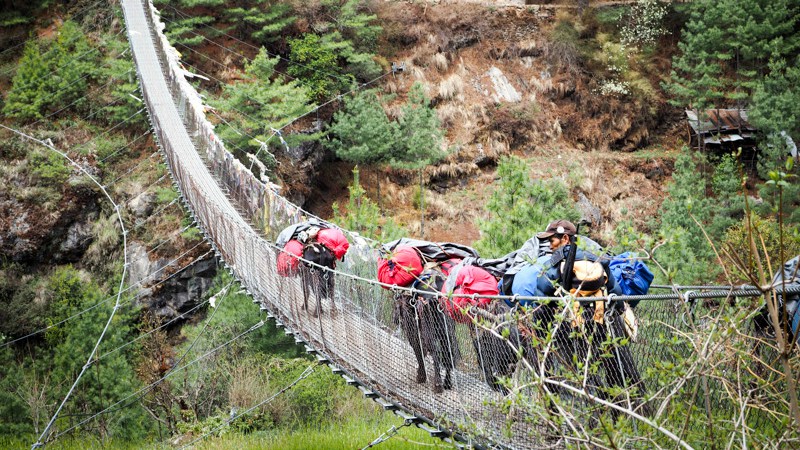
Crossing a suspension bridge is an integral Base Camp experience! Image c/o CC Hua.
Your efforts are rewarded at every turn however, when you feast your eyes on the jaw-dropping scenery of Nepal before you.
Back to basics
The food and accommodation along the trek to Everest Base Camp may be basic, but it’s more than adequate. Teahouse menus all offer up a similar array of food that includes momos (dumplings), noodles, soup and dal bhat (rice, curry and vegetables). While it may become a little repetitive, the carbohydrate-heavy menu will provide you with all the sustenance you need during your time on the mountain. It’s advisable to avoid meat, though, because any meat has to be carried up and freshness can’t be assured.
The locals recommend garlic soup as a natural remedy for altitude sickness. My only advice on this one? Consider your roommates if you have this for your evening meal.
The rooms will have a simple bed with a pillow. Some teahouses also provide a blanket, but a good quality sleeping bag is your best friend on cold nights. Shared bathrooms are the norm, and yep – you will become adept at using a squat toilet.
Altitude sickness
About 50% of people get altitude sickness, so you might experience it in some form during your trek. From altitudes of 3000m above sea level onwards, you may encounter common symptoms such as headache and nausea.
Some people take Diamox (acetazolamide) to help with altitude sickness – but your doctor will give you all the appropriate advice, so make sure you pay them a visit before travelling. Paracetamol and ibuprofen can also help alleviate symptoms. If you choose to take Diamox, a side effect is increased urination, so be prepared to make some tactical retreats behind bushes during the trek!
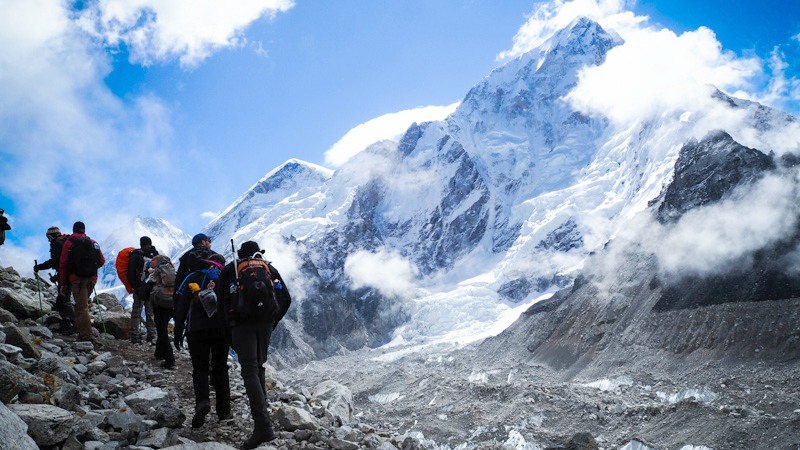
Along the trail to Base Camp. Image c/o CC Hua.
In rarer cases, acute mountain sickness (AMS) can worsen into High Altitude Cerebral Edema (HACE) or High Altitude Pulmonary Edema (HAPE). These conditions are less common but potentially life threatening, so it is important to listen to your guides. If they advise you descend to a lower altitude, trust in their experience and be guided by their recommendations. Descending to a lower altitude is the only sure-fire cure for AMS, so with every step down, you will start to feel much better as your symptoms subside.
The Khombu Cough
Some trekkers my also develop what is referred to as ‘The Khombu Cough’. The combination of physical exertion, cold temperatures and low humidity means that your body quickly breathes in cold, dry air that dries out the lining of the lungs and bronchi, resulting in a dry, hacking cough.
Drinking plenty of warm fluids will ease the cough. Wearing a buff or bandana can also help, as it keeps your throat warm and prevents cold air and particulates from entering and irritating your lungs.
Traffic jams
Everest Base Camp is an increasingly popular trail. Depending on the time of year you’re hiking, you will cross paths with a number of other trekkers. Be considerate on narrow paths and allow faster walkers to pass you. Beasts of burden such as cows, donkeys and yaks are a common sight on the mountain. Stay clear of them lest you meet the pointy end of a stray horn!
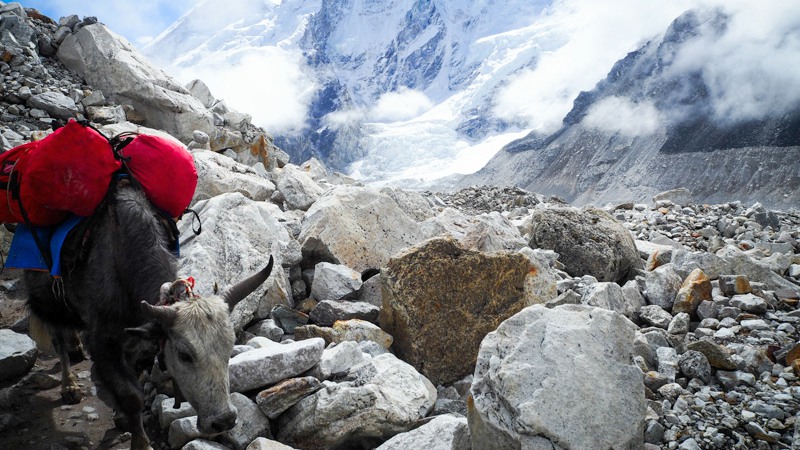
Carrying the load. Image c/o CC Hua.
There will also be many porters on the trail. These guys are the backbone of the mountain. You will no doubt see porters carrying enormous weights up incredibly steep hills and marvel at their superhuman strength and perseverance. Porters ALWAYS have right of way, so if there is one trying to pass, let them on through. They may be carrying your dinner, after all.
Four seasons in one day
Weather moves very quickly on the mountain. Your day may begin with clear blue skies, but can quickly change to rain and/or snow. Dressing in layers makes it easier for you to add/remove clothing as the weather dictates. Always carry wet weather gear (rain jacket, waterproof pants and gaiters) in your daypack for easy access.
Memories of a lifetime
The physical aches and pains of your adventure will soon subside, but what you will be left with is a trove of memories unlike any others. The friendships that are forged on your trip are often fast and deep. The majesty of the Himalayas and the kindness of the Sherpa people remains with you always. And when you look back on your trek in Nepal to Everest Base Camp, you’ll look back with a sense of accomplishment and of happiness.
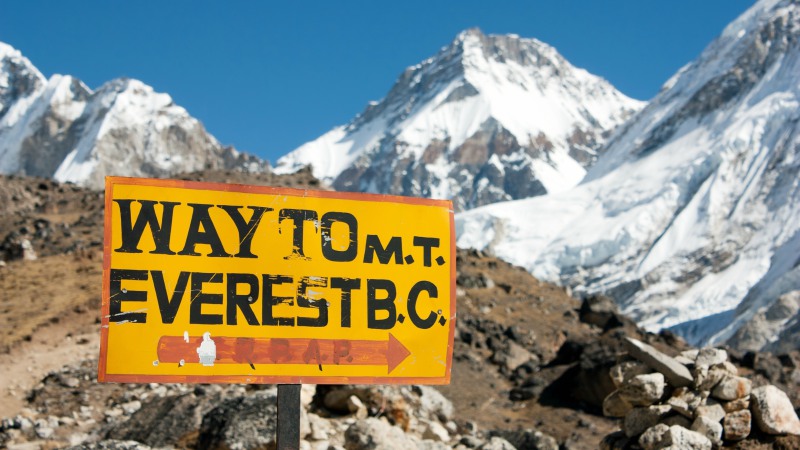
Are you ready?
Ready to hit the trail? Check out Intrepid’s expertly guided range of small group treks up Everest Base Camp.

